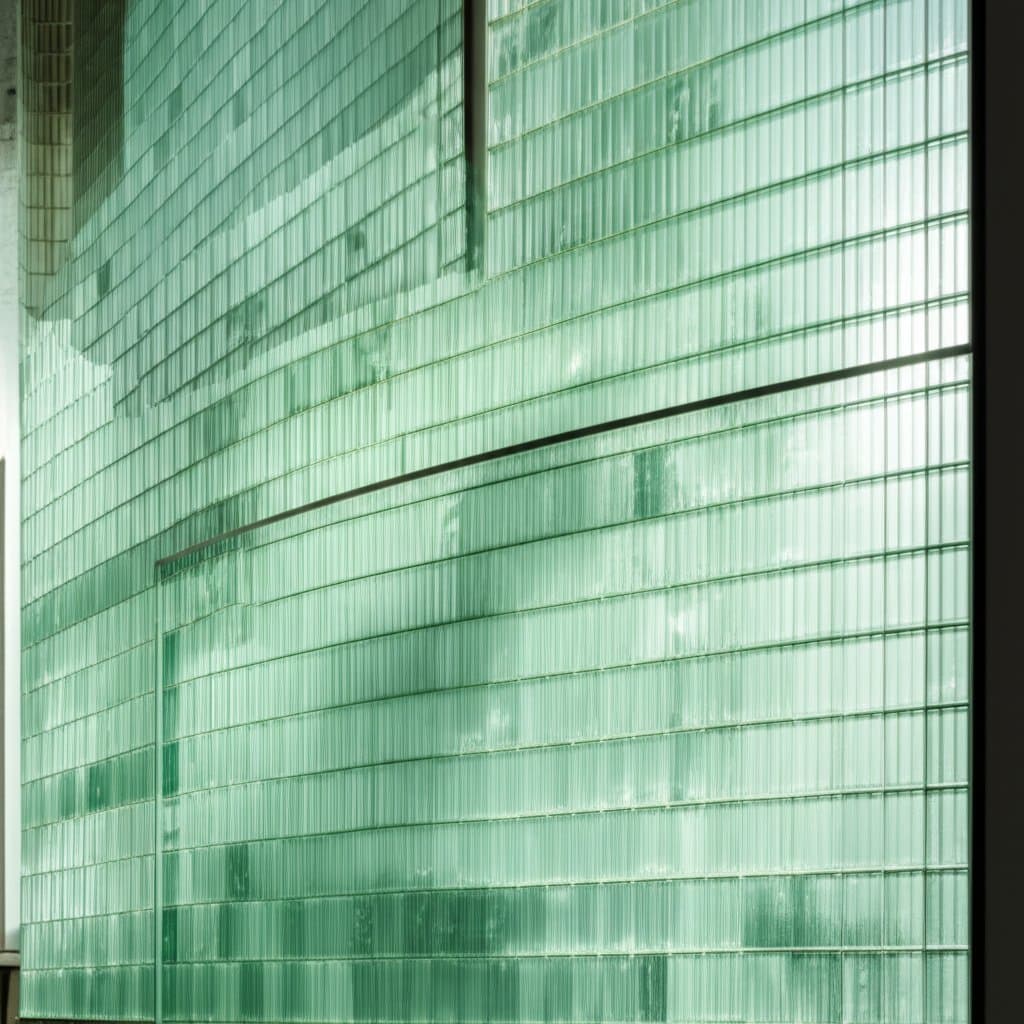Build Green in 2025 with Recycled Glass Bricks
Sustainable building practices have become essential in modern construction. Recycled glass bricks offer a way to blend aesthetic appeal with environmental responsibility. These materials convert glass waste into robust, light-permeable masonry that minimizes landfill contributions and energy demands. This guide details the production of recycled glass bricks, key planning considerations, precise installation methods, and ongoing maintenance strategies.
Key Takeaways
- Cost Breakdown: Installed recycled glass brick walls range from $18 to $28 per square foot, with materials accounting for 60 percent, labor for 35 percent, and equipment for 5 percent.
- Dimensions and Weight: Standard bricks measure 8 by 4 by 2 inches and weigh 3 to 4 pounds apiece.
- Installation Pace: An experienced mason completes 25 to 30 square feet daily.
- Insulation Properties: R-values fall between 0.25 and 0.35, making these bricks ideal for interior dividers or ornamental exteriors when combined with additional insulation.
- Selection Criteria: Factors such as local glass recycling access, load-bearing needs, and light diffusion preferences guide decisions.
Understanding Recycled Glass Bricks
Manufacturers create recycled glass bricks by crushing post-consumer or industrial glass and fusing it under intense heat into solid, resilient blocks. This method requires fewer virgin resources and less energy than producing conventional clay or concrete bricks. Units often contain up to 85 percent recycled material, varying by intended color and transparency.
Types and Aesthetic Features
Two primary varieties exist:
- Solid Glass Bricks: These fully dense blocks suit decorative partitions, pillars, and focal elements.
- Hollow Glass Blocks: Featuring internal voids, they provide lighter weight and better thermal efficiency.
Available hues include clear, frosted, amber, blue, and green. Certain manufacturers blend in fragments of crushed mirrors or tempered glass to achieve a sparkling finish.
Performance and Ecological Advantages
These bricks withstand fading, rust, and dampness, qualifying them for indoor and outdoor applications. They support green certification programs by lowering carbon footprints. Constructing one square foot of wall diverts approximately 4 to 6 pounds of glass waste from disposal sites.
Planning Your Project
Navigating Permits and Regulations
Consult local building codes at the outset. Authorities often designate glass brick systems as non-structural, necessitating support frames or reinforcements. Secure permits for any external or dividing wall taller than 6 feet.
Choosing Materials and Managing Expenses
Examine supplier data sheets for compressive strength ratings of 2,500 to 3,500 PSI. Evaluate vendors on recycled content levels and visual uniformity. Purchasing in volume may lower material prices by as much as 10 percent.
Essential Tools and Supplies
- Recycled Glass Bricks: Select dimensions that align with your blueprint and structural demands.
- Mortar: Opt for a low-shrinkage formula designed for glass surfaces to prevent discoloration.
- Reinforcement: Incorporate stainless steel or fiberglass mesh for added integrity.
- Grout: Choose a version resistant to ultraviolet exposure for outdoor use.
- Protective Equipment: Equip workers with gloves, safety glasses, and dust masks to guard against shards and particles.
Preparing the Site
Start with a firm, even foundation. For connections to floors or bases, pour a reinforced concrete footing no less than 8 inches thick. Wipe the surface clean and moisten it slightly to enhance mortar bonding. Use a chalk line during initial layout to ensure even brick spacing.
Step-by-Step Installation
1. Lay the Foundation Row
Position the initial layer of bricks parallel to your guideline. Spread a 3/8-inch bed of mortar and seat each brick securely. Verify levelness and vertical alignment at regular intervals.
2. Build Upward Layers
Spread mortar on the upper face of each brick and add reinforcement mesh at every third level. This approach balances weight distribution and minimizes fracture risks. Keep joint widths between 1/4 and 3/8 inch.
3. Apply Grout and Refine Surfaces
After reaching the desired height, permit the mortar to harden for a minimum of 24 hours. Tool grout into joints with a rubber float, then wipe excess with a moist sponge prior to setting. Steer clear of acidic solutions that might damage the glass.
4. Cure and Evaluate
Allow seven days for full curing before adding finishes or attachments. Examine the assembly for even joints, secure adhesion, and no apparent gaps.
Addressing Installation Challenges
- Inconsistent Joints: Employ spacers or alignment clips to achieve steady intervals.
- Stains from Mortar: Shield surfaces with masking tape and remove drips promptly.
- Cracks at Edges: Strengthen junctions with elastic sealants or flexible joints.
- Moisture in Hollow Units: Ensure airtight seals around edges, particularly in moist climates.
Upkeep and Durability Strategies
These bricks demand little routine care. Wash them using a gentle soap solution and water every three to six months. Annually review mortar lines for fissures exceeding 1/16 inch in width, and repair as necessary. For outdoor setups, monitor for salt deposits or water penetration following storms. With consistent attention, well-constructed walls endure beyond 50 years.
Weighing DIY Against Professional Help
Homeowners can manage small indoor screens or accents below 5 feet tall independently, potentially saving 20 to 30 percent on labor. Such projects yield satisfying results with careful execution. Professionals, however, deliver exact placements and regulatory adherence that safeguard longevity. Engage certified experts for load-bearing elements, elevated structures, or intricate curves. Verify credentials, past work, coverage, and guarantees prior to commitment.
Achieve Lasting Sustainable Designs
Recycled glass bricks enable waste reduction alongside captivating visuals. Master these techniques—from site readiness to preservation—to construct enduring, eco-friendly features that honor skill and planetary care.
